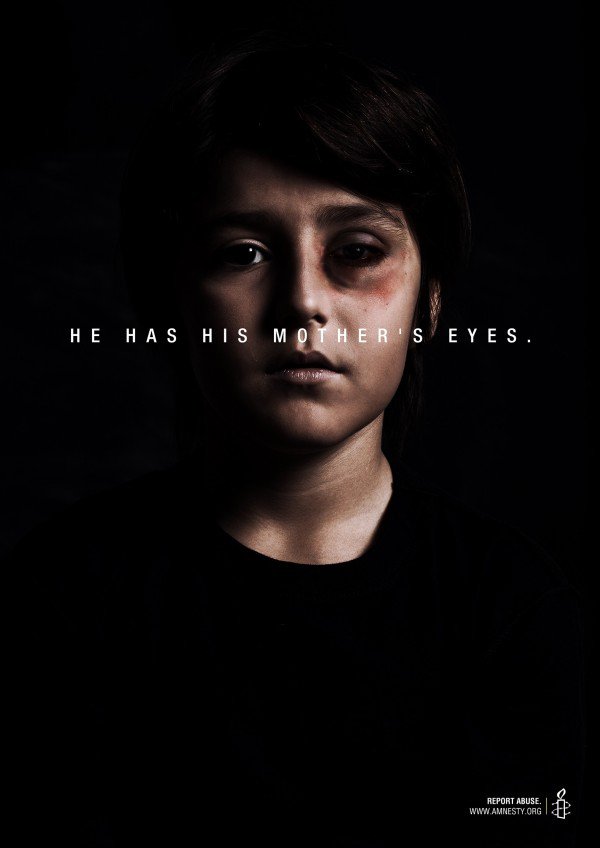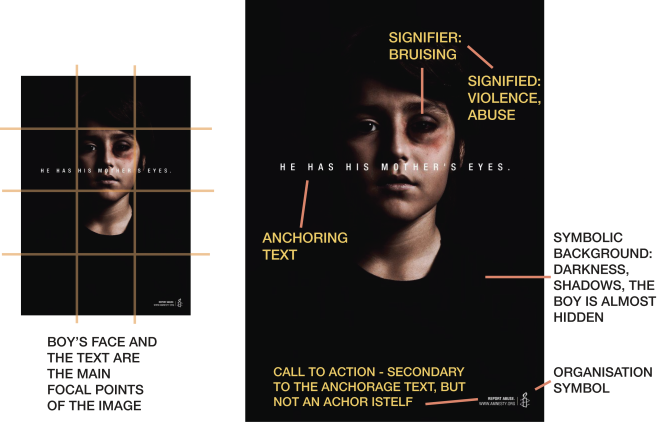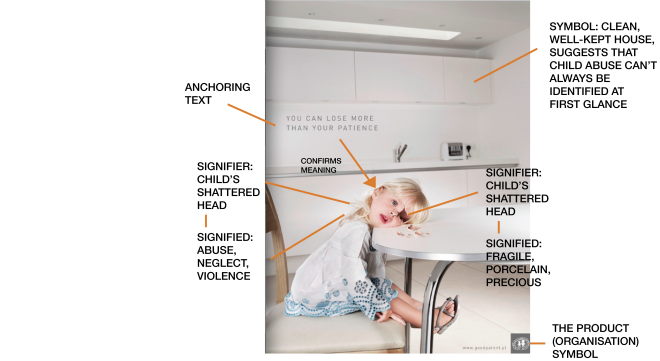Student Name: Jess Vandersande
Date of post: 27/08/15
Topic + Lecture Week: Semiotics (Advertisement Analysis) WK3
Image One – Contextual Information:
Collection/source – Amnesty International
Medium/Technique – Digitally altered photograph
Semiotic Analysis:
Collection/source – Nobody’s Children Foundation Campaign
Medium/Technique – Digitally altered photograph
Semiotic Analysis:
The light backgrounds of these images is a different representation of abuse, as upon first glance, the image itself is bright and welcoming until the eye is drawn to the image of the little girl at the table. Her head is cracked against the glass, almost as if her skin was made of porcelain. The injury itself is a index of the violence (or perhaps extreme neglect) that has been committed against the child. The signified abuse is layered with another level of meaning in the way in which her skin has been depicted; shattered porcelain, representative of the fragility of a child in the way that just as porcelain will crack or shatter if handled with too much force, so might the life of a child.
The tonality of the image is bright and inviting, with the deceptive use of warm tones and the clean realism of the image. The child herself is dressed neatly. This in itself is a symbol of how abuse cannot always been seen at first glance, and once realised, is often too late.
The phrase ‘You may lose more than your patience’ is an anchorage to the signified violence and symbolised fragility of a child. It relays the meaning of the image, confirming that this was definitely an act of violence, and not an accident.
Comparative Study:
In comparison, both advertisements have taken a difference route in portraying the same message (a call for action to stop child abuse). The first image utilises dark, serious tones, and the brutality of the child’s injury is the first thing that is seen. This image makes use of the cultural understanding of ‘he has his mother’s eyes’ and extends it to include the cycle of abuse within families. In comparison, the second advertisement is a more subtle relay of information, with the bright, unsuspecting image that surrounds the broken child insisting upon a more hidden form of abuse, one that stems from a parent’s neglect or misplaced frustration. The first image focuses on the brutality of the abuse itself, whilst the second image re-enforces the fragility of a child.



